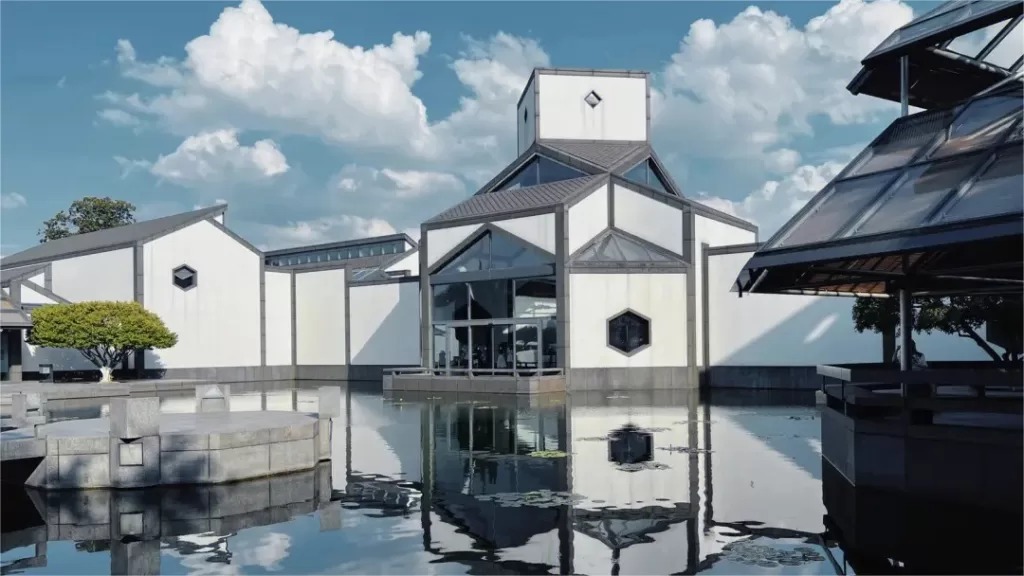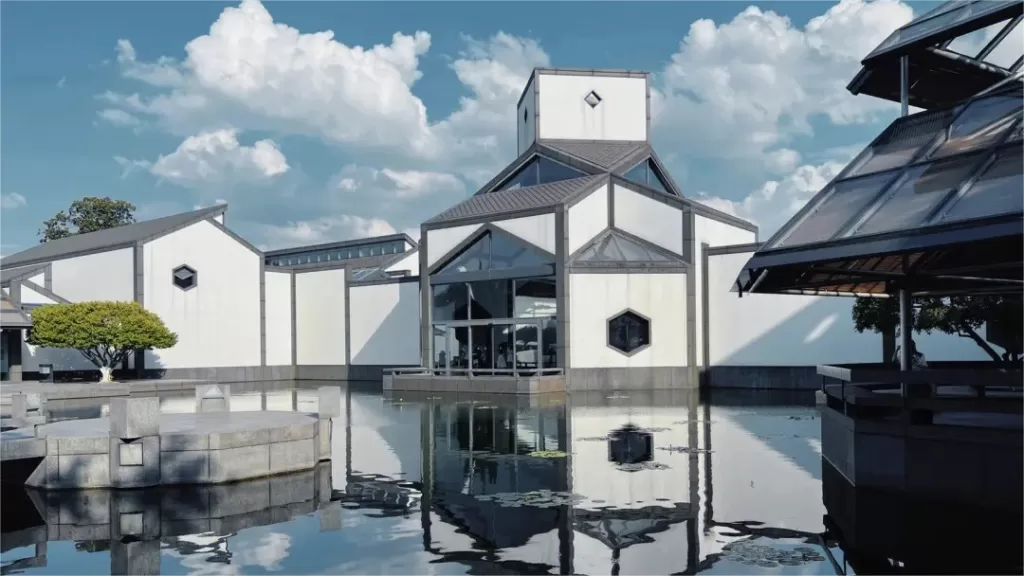The Structure of Suzhou Museum – a masterpiece of I.M. Pei


Suzhou Museum, located in the historic city of Suzhou, China, is a masterpiece of modern museum architecture that elegantly blends traditional Chinese elements with contemporary design. Designed by world-renowned architect I.M. Pei, the museum opened its doors to the public in October 2006. Covering an area of approximately 10,700 square meters, the museum houses a vast collection of historical artifacts and cultural treasures from the region. The architectural design of Suzhou Museum is a reflection of Suzhou’s rich cultural heritage, and it serves as a symbol of the city’s enduring history and artistic achievements.
Historical Significance: Suzhou has a history that dates back over 2,500 years and is renowned for its classical gardens, stunning waterways, and its profound cultural legacy. The city’s traditional architecture features white-walled, black-tiled structures, elegant gardens, and intricate wood carvings. I.M. Pei, being a Chinese-American architect with a deep appreciation for his cultural roots, understood the significance of preserving Suzhou’s architectural heritage while adding a touch of modernity to the museum.
Harmonious Integration: Pei’s architectural vision for the Suzhou Museum was to create a seamless integration of the museum with the surrounding landscape. The museum is strategically located at the heart of Suzhou, nestled amidst picturesque gardens and traditional structures. The design respects the city’s urban fabric, ensuring the museum doesn’t overpower its historical context but rather complements and enhances it.
Garden Courtyard Design: One of the most captivating aspects of the Suzhou Museum is its garden courtyard design. The museum is organized around a series of interconnected courtyards, much like the classical gardens of Suzhou. These courtyards are interspersed with reflective pools and elegantly landscaped gardens, inviting visitors to stroll through the serene spaces and creating a harmonious connection between the exhibits and nature.
White and Black Palette: The exterior of the museum boasts a color palette reminiscent of traditional Suzhou architecture – white walls and black roof tiles. The white walls symbolize purity and simplicity, while the black tiles represent elegance and dignity. Pei’s use of this classic color scheme pays homage to Suzhou’s heritage while also giving the museum a timeless and sophisticated appearance.
Water and Light: Water is a fundamental element in classical Suzhou gardens, and Pei ingeniously incorporates it into the museum’s design. The strategic placement of water features and pools throughout the courtyards creates a tranquil and reflective atmosphere. Moreover, the interplay of light and shadow on the water’s surface adds a poetic dimension to the museum’s ambiance, creating a captivating experience for visitors.
Modern Architectural Elements: While the museum pays homage to traditional Chinese architecture, it also incorporates modern design elements. The museum’s interior spaces are characterized by clean lines, open spaces, and natural light. The juxtaposition of modern materials like glass and steel with traditional wood and stone highlights the harmony between the past and the present, making it a symbol of cultural continuity.
Architectural Symbolism: Beyond its functional purpose as a museum, the architecture of Suzhou Museum is replete with symbolism. Its design evokes a sense of unity between man and nature, past and present, and tradition and innovation. The courtyards represent the harmony between human life and the natural world, while the fusion of traditional and modern architectural elements symbolizes the continuity of Chinese culture in a rapidly changing world.
Conclusion: In conclusion, the Suzhou Museum stands as a testament to the genius of architect I.M. Pei and his ability to seamlessly blend tradition with modernity. The museum’s design not only showcases the rich cultural heritage of Suzhou but also serves as an architectural masterpiece that inspires a profound sense of awe and appreciation. As visitors wander through the tranquil garden courtyards and explore the impressive exhibits, they are not only immersed in the history of Suzhou but also in the essence of China’s architectural and cultural magnificence.